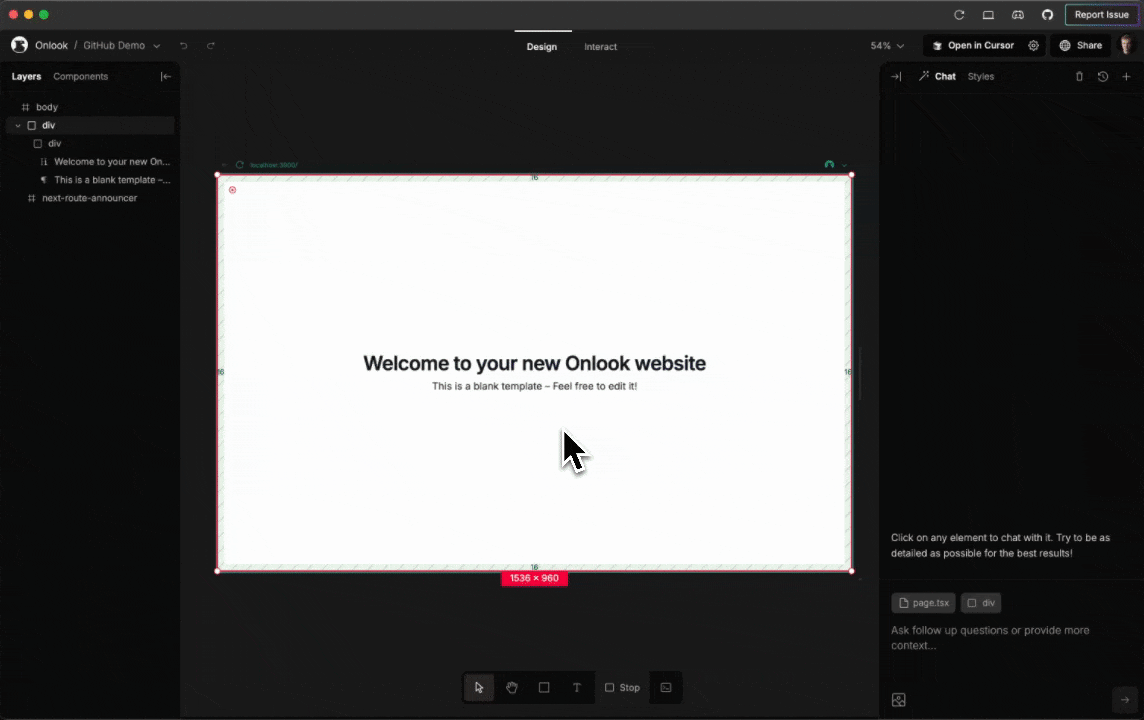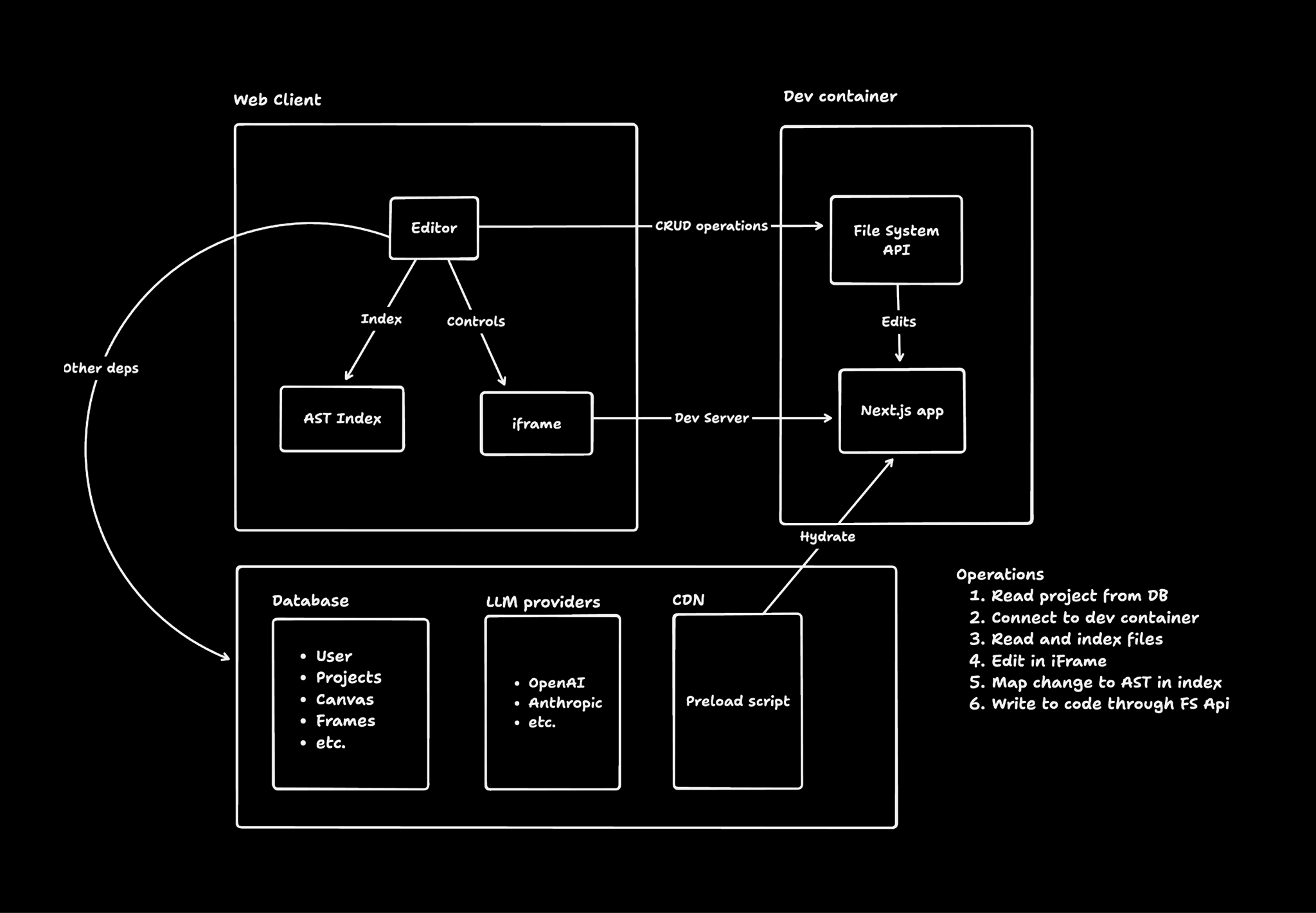Onlook Overview: The Cursor for Designers
Onlook is an AI-powered platform designed to facilitate web development by enabling users to interact with and modify web applications through natural language. Its primary objective is to streamline the development process, making it more accessible for individuals without extensive coding expertise, while ensuring the output is production-ready code.

Project Information
| Field | Details |
|---|---|
| GitHub Repository | 🔗 onlook-dev/onlook |
| Live Demo | 🌐 onlook.com |
| Author | @onlookdev |
| Project Status | ⭐ 22.7k Stars · 🍴 1.6k Forks · 🔄 Active |
| License | Apache-2.0 License |
Feature Highlights
- Build with Words: Describe a component, a layout, or an entire page. Watch as Onlook’s AI instantly generates the clean React and Tailwind CSS code to bring your vision to life.
- Edit Live: Click on any element on your live website preview and simply tell the AI what to change. “Make this button green,” or “add a hero image here.” The changes appear in real-time.
- Real, Production-Ready Code: No black boxes or proprietary formats. Onlook generates clean, maintainable Next.js code that you own. Sync it directly to your GitHub repository at any time.
- One-Click Publishing: Deploy your finished site to the web with a single click and easily connect your own custom domain for a professional presence.
System Overview
Onlook processes development tasks through a highly integrated system that orchestrates AI capabilities, real-time visual feedback, and robust data management. From a high-level perspective, the workflow involves user input, AI processing, code transformation, and visual representation.
When a user initiates a task, such as describing a desired UI component or requesting a modification to an existing element:
- User Interaction Capture: The main application captures the user’s natural language input or their direct visual interaction within the real-time preview. This includes selecting elements, typing text, or initiating drag-and-drop actions.
- Contextual Prompt Generation: This input, along with relevant contextual information (e.g., existing code of the affected component, current styles, surrounding DOM structure from the preview), is used to construct a detailed prompt. This prompt is then sent to the AI processing layer.
- AI Analysis and Instruction Generation: The AI, guided by its defined expert persona and a set of operational tools (such as internal search capabilities and the ability to execute terminal commands in its environment), analyzes the contextual prompt. It then generates precise, structured instructions for code modification, rather than producing raw code directly.
- Structural Code Transformation: These AI-generated instructions are fed into Onlook’s code parsing and transformation engine. This engine does not perform simple text replacement but operates on the Abstract Syntax Tree (AST) of the code. It accurately applies the modifications (e.g., updating attributes, changing text content, or altering structural elements like inserting or removing components), ensuring the resulting code remains syntactically correct and stable.
- Real-time Visual Feedback: The newly modified code is then propagated back to the user interface. The real-time preview environment receives this updated code and instantly re-renders the application. This provides immediate visual confirmation of the AI’s changes, completing the feedback loop and allowing for continuous, iterative development.
- Version History Management: Throughout this process, any significant code changes can be recorded using the integrated version control system. Users can explicitly commit their progress, creating snapshots of their project’s evolution, which contributes to a navigable development history.
This synergistic interaction between natural language understanding, intelligent code manipulation, and immediate visual feedback forms the foundation of Onlook’s approach to simplifying web application development.
